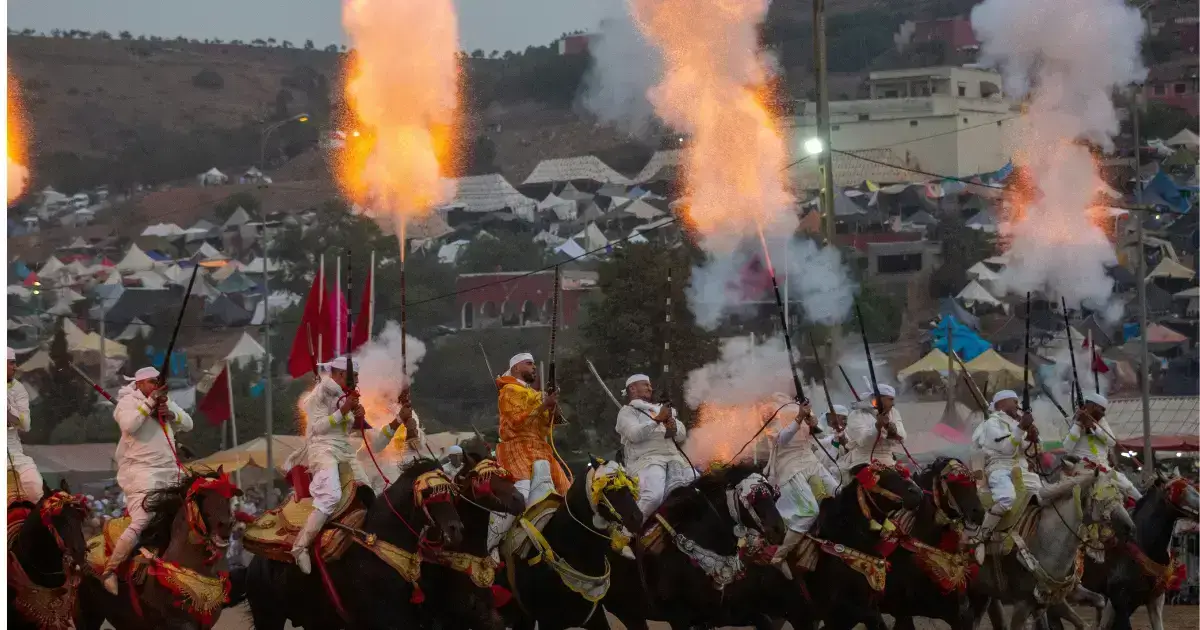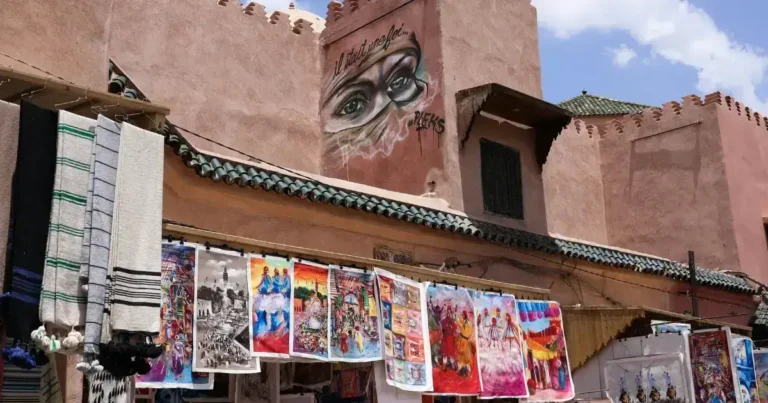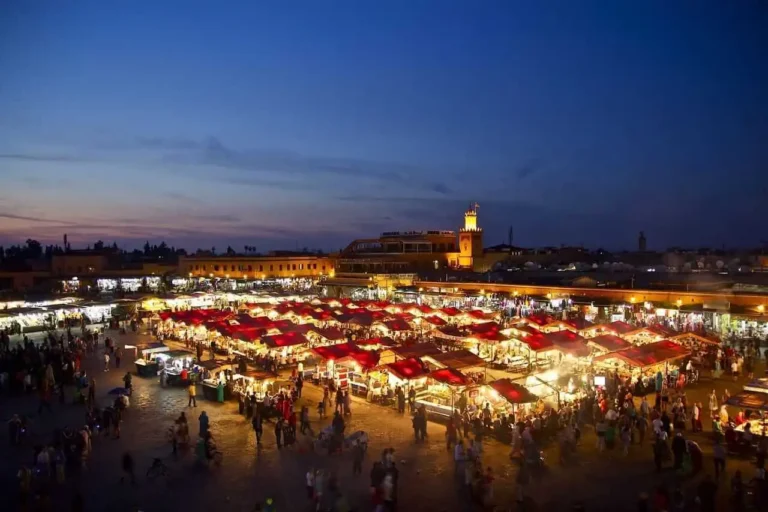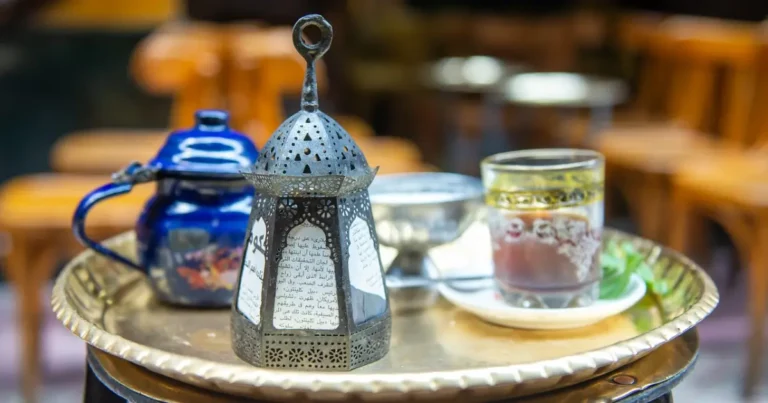Moroccan Culture Unveiled: A Complete Guide to Its Rich Tapestry
Table of Contents
Moroccan Culture Unveiled: A Complete Guide to Its Rich Tapestry
Step into Morocco, and you’ll immediately be enveloped by a symphony of senses – the aromatic spices wafting through ancient medina alleyways, the melodic call to prayer echoing across terracotta rooftops, and the vibrant colors of traditional textiles dancing in the sunlight. This North African kingdom stands as a living testament to centuries of cultural richness, where tradition and modernity intertwine in a mesmerizing dance.
Moroccan Lifestyle: A Glimpse into Daily Customs
Life in Morocco flows with a rhythm deeply rooted in tradition and social connection. When Moroccans greet each other with “As-salaam-alaikum” (Peace be upon you), it’s more than mere courtesy – it’s an expression of genuine warmth that sets the tone for all social interactions. Men often exchange handshakes while maintaining eye contact, a gesture that speaks volumes about the culture’s emphasis on personal connection.
The traditional dress reflects both cultural pride and practical wisdom. The djellaba, a loose-fitting hooded robe, protects from both sun and wind while maintaining modesty. Women’s caftans, often adorned with intricate embroidery, showcase the country’s masterful artisanship while providing comfort in Morocco’s varying climate.
Moroccan cuisine tells the story of centuries of cultural exchange. In homes across the country, tagines slow-cook tender meats and vegetables with an artful blend of spices – cumin, saffron, cinnamon, and more – creating dishes that are both nourishing and deeply satisfying. The ritual of sharing couscous after Friday prayers brings families together in a weekly celebration of community.
Moroccan Identity: Values That Shape the Nation
The Moroccan identity is woven from threads of family bonds, religious devotion, and community solidarity. Family represents the cornerstone of society, with multiple generations often sharing not just living spaces but daily life experiences. This creates a support system that nurtures both young and old, preserving traditions while adapting to modern challenges.
While Islam forms the spiritual backbone of Moroccan society, the country’s religious landscape includes historic Jewish quarters and Christian communities. This diversity has fostered a culture of tolerance and mutual respect that distinguishes Morocco in the region.
Preserving Cultural Heritage
Morocco’s cultural heritage lives on through its vibrant artistic traditions. In the medinas of Fez and Marrakech, master artisans still practice centuries-old crafts, creating intricate pottery, handwoven carpets, and elaborate metalwork. The rhythmic tapping of copper workers and the gentle whir of pottery wheels provide the soundtrack to streets that have changed little since medieval times.
Traditional music and dance serve as living links to the past. Whether it’s the spiritual Gnawa rhythms, the celebratory beats of Berber music, or the soul-stirring call of Andalusian orchestras, Morocco’s musical heritage captures the nation’s diverse cultural influences.
Life’s Milestones: Moroccan Ceremonies
Every significant life event in Morocco is marked by rich ceremonial traditions. The birth of a child is celebrated with the ‘Aqiqah’ ceremony, where family and friends gather to welcome the newest member of the community. The baby’s hair is cut and weighed, with an equivalent value in gold or silver given to charity – a practice that emphasizes both celebration and social responsibility.
Marriage in Morocco is an elaborate affair that can span several days. The traditional engagement, or ‘Khitbah,’ begins with formal negotiations between families, followed by the exchange of gifts that symbolize commitment and prosperity. Wedding celebrations themselves are grand community events, with the bride undergoing multiple costume changes, each outfit more spectacular than the last. The application of henna to the bride’s hands and feet creates intricate patterns that symbolize joy and blessing.
Festivals That Unite Communities
Throughout the year, Moroccan festivals bring communities together in celebration. The end of Ramadan is marked by Eid al-Fitr, transforming cities and villages into scenes of jubilation as families exchange visits and children receive gifts and sweets. The Marrakech Popular Arts Festival turns the red city into an open-air theater, where traditional performers showcase their talents against the backdrop of historic walls.
In the High Atlas Mountains, the Imilchil Marriage Festival provides a unique glimpse into Berber culture, where young people from different tribes gather to find potential spouses. The festival combines ancient customs with music, dance, and colorful traditional dress.
The Art of Moroccan Cuisine
Moroccan cuisine is a testament to the country’s position at the crossroads of many civilizations. The foundation of most meals consists of locally grown ingredients – fragrant herbs, fresh vegetables, and grains. Spices are used with precision and knowledge passed down through generations. The iconic tagine pot, with its cone-shaped lid, creates a self-basting cooking environment that produces incredibly tender and flavorful dishes.
Architectural Heritage: A Visual Feast
Morocco’s architectural landscape tells the story of its history through every arch, dome, and minaret. The country’s buildings showcase a magnificent blend of Islamic, Berber, and French colonial influences. In cities like Fez, massive ancient gates lead to medinas where narrow streets reveal surprise after surprise – from intimate courtyards to grand mosques.
The famous blue city of Chefchaouen, nestled in the Rif Mountains, displays a unique architectural character with its buildings painted in various shades of blue. Local legend suggests this tradition began with Jewish settlers in the 1930s, who believed blue represented the sky and heaven.
Religious Life and Spiritual Practices
The daily rhythm of life in Morocco is deeply influenced by religious observance. The call to prayer sounds five times daily, creating natural pauses in the day’s activities. During Ramadan, the entire pace of life shifts as communities fast together from dawn to dusk, breaking their fast with informal street festivals each evening.
Mosques serve as both spiritual and community centers, with the Hassan II Mosque in Casablanca standing as a modern architectural marvel that can accommodate 25,000 worshippers. The spiritual practice of Islam here is characterized by its openness to local traditions and its emphasis on community harmony.
Embracing Moroccan Culture
Understanding and respecting Moroccan customs opens doors to genuine connections with local communities. Whether you’re sharing a mint tea with new friends, wandering through the souk, or participating in a local festival, each experience becomes richer when approached with cultural awareness and appreciation.
This living heritage continues to evolve while maintaining its essential character, making Morocco a fascinating study in how traditional values can thrive in a modern world. The country stands as a reminder that cultural heritage is not just about preserving the past – it’s about keeping traditions alive and meaningful in the present.





